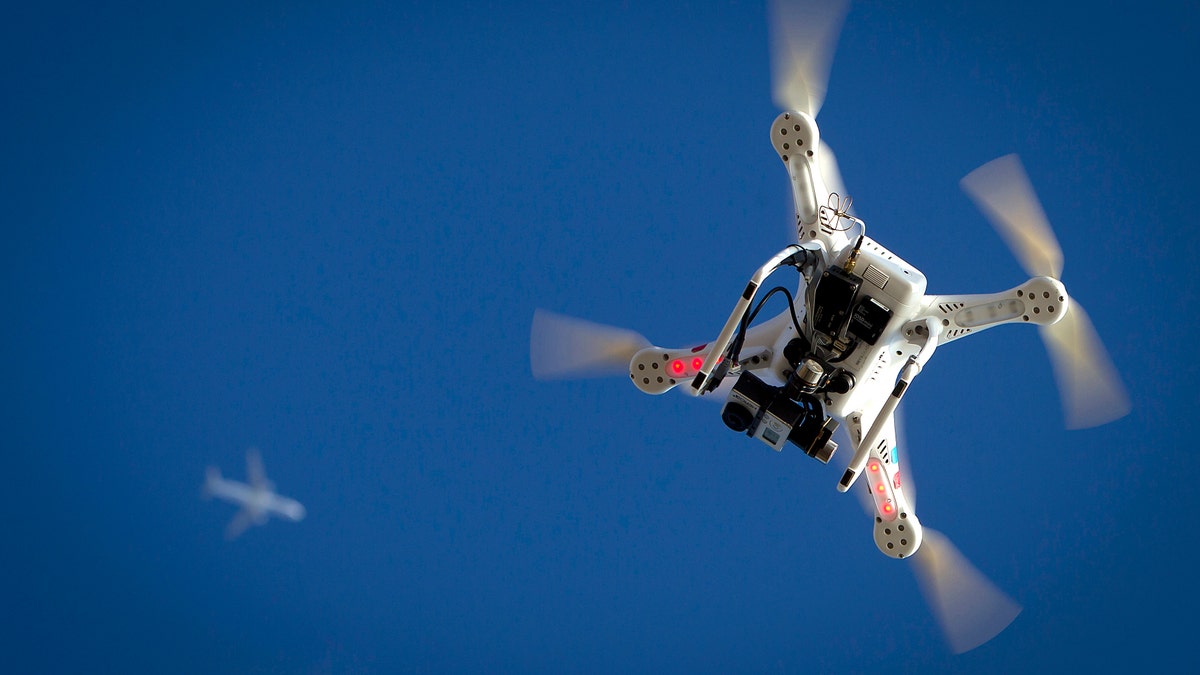
File photo - An airplane flies over a drone during the Polar Bear Plunge on Coney Island in the Brooklyn borough of New York Jan. 1, 2015. (REUTERS/Carlo Allegri)
The Federal Aviation Administration has published its regulations for small drones, a key move toward integrating commercial use of the technology into America’s airspace.
The Small Unmanned Aircraft Rule (Part 107) was finalized by the FAA and Department of Transportation on June 21 and published in the Federal Register Tuesday. The rule comes into effect Aug. 29 2016.
Development of drones, also known as Unmanned Aircraft Systems (UAS) and Unmanned Aerial Vehicles (UAVs), has ramped up dramatically in recent years. The new rule could have a major impact on commercial drone use in areas such as crop and pipeline inspection and aerial photography, as well as research, education and rescue operations.
The rule limits the unmanned aircraft weighing less than 55 pounds to daylight or civil twilight (30 minutes before official sunrise to 30 minutes after official sunset, local time) flight, provided appropriate anti-collision lighting is used. The drone must stay within the remote pilot or operator’s visual line-of-sight at a maximum altitude of 400 feet. If the drone is higher than 400 feet, it must remain within 400 feet of a structure, according to the FAA.
The rule also requires that an individual operating a small UAS must either hold a remote pilot airman certificate with a small UAS rating or be under the direct supervision of someone who holds the certificate (the remote pilot in command). To qualify for the remote pilot airman certificate the person must pass an aeronautical knowledge test. However, individuals who hold a part 61 pilot certificate other than student pilot can also qualify for the certificate by completing a flight review and an FAA training course. Remote pilot certificate candidates will also be vetted by the Transportation Security Administration (TSA) and must be more than 16 years old.
Related:
The FAA estimates that the out-of-pocket cost for an individual to become certificated as a remote pilot with a small UAS rating is $150.
The Association for Unmanned Vehicle Systems International (AUVSI), which represents the drone industry, welcomed the FAA’s small UAS rule.
AUVSI President and CEO Brian Wynne described the new rule as “a critical milestone” in the drone integration process and a victory for American businesses and innovators in a statement released last week.
“It establishes a clear regulatory framework and helps to reduce many barriers to civil and commercial operations, allowing anyone who follows the rules to fly in the national airspace,” he said. “Accelerating civil and commercial UAS operations will not only help businesses harness tremendous potential of UAS, it will also help unlock the economic impact and job creation potential of the technology.”
A report released by AUVSI in 2013 estimated that the expansion of UAS technology will create more than 100,000 jobs and have an economic impact of around $82 billion in the first decade following integration.
Drone maker DJI also welcomed the new regulations. “This is a watershed moment in how advanced technology can improve lives, as the Small UAS Rule allows companies, farmers, researchers and rescue services alike to explore how drones can let them do more at a lower cost and a lower risk,” said Brendan Schulman, DJI’s vice president of policy and legal affairs, in a statement released last week.
DJI notes that the new regulations replace the current FAA scheme that requires commercial drone operators to spend months waiting for an FAA exemption and to employ a pilot with a manned aircraft license from the FAA. “Those high barriers to entry have prevented many companies from exploring the benefits of drones in their industry, and have been a source of frustration for business owners for years,” it said, in its statement.
Critics, however, say that businesses will get maximum benefit from drones when operators are allowed to fly the technology beyond their visual line-of-sight.
Logan Harris, CEO of perimeter protection specialist SpotterRF, described the regulations as a step in the right direction, but said much more needs to be done. "The FAA must provide security personnel options to respond to the threat of dangerous activity by drones in and around vulnerable critical infrastructure, including power plants, dams, substations, and airports and around wild fires and law enforcement," he said, in a statement emailed to FoxNews.com. "A large number of organizations are expressing similar concerns."
Follow James Rogers on Twitter @jamesjrogers
